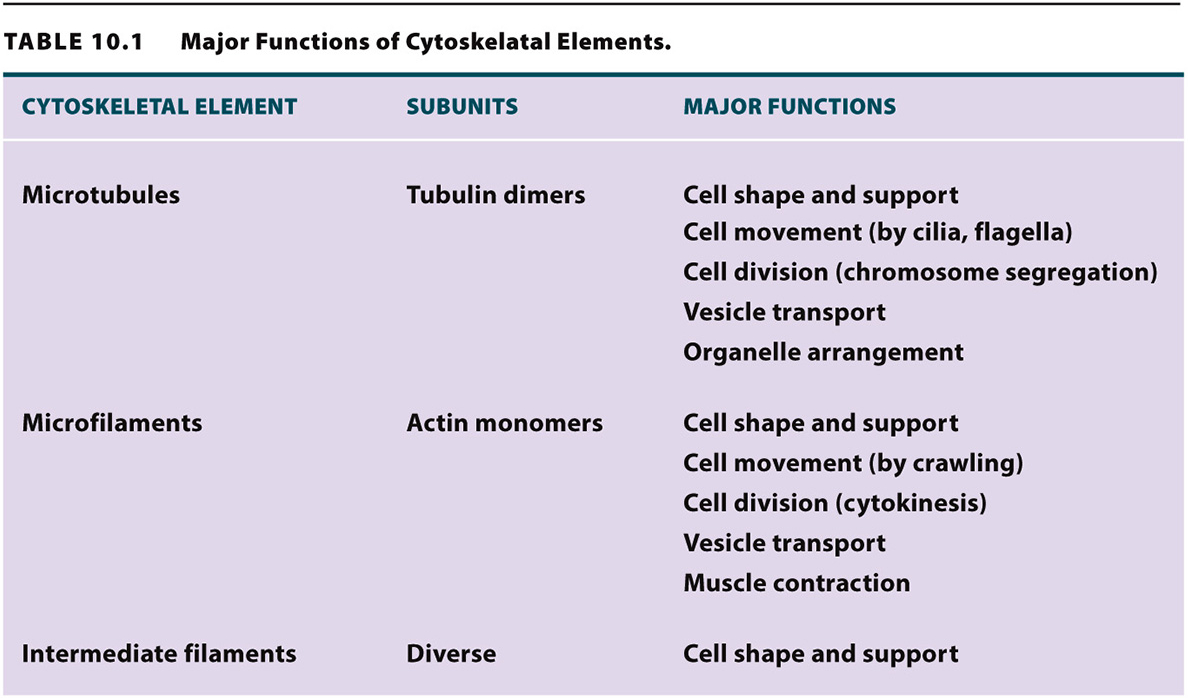The cytoskeleton is an ancient feature of cells.
Actin and tubulin are found in all eukaryotic cells, and their structure and function have remained relatively unchanged throughout the course of evolution. The amino acid sequences of yeast tubulin and human tubulin are 75% identical. Similar comparisons of actin from amoebas and animals show that they are 80% identical after close to a billion years of evolution. In fact, a mixture of yeast and human actin monomers forms hybrid microfilaments able to function normally in the cell.
Not long ago, it was believed that cytoskeletal proteins were present only in eukaryotic cells. However, a number of studies have shown that many prokaryotes also have a system of proteins similar in structure to the cytoskeletal elements of eukaryotic cells and are involved in similar processes, including the separation of daughter cells during cell division. Interestingly, at least one of these prokaryotic cytoskeleton-
206
The major functions of microtubules, microfilaments, and intermediate filaments are summarized in Table 10.1.
